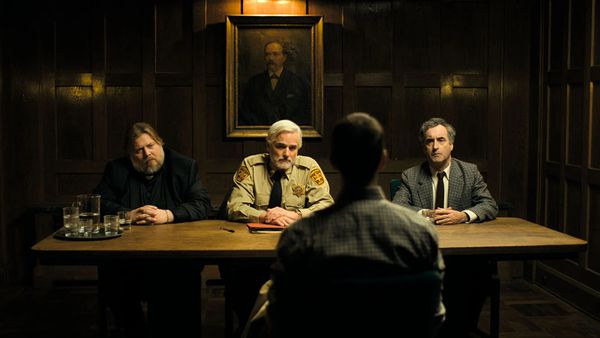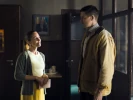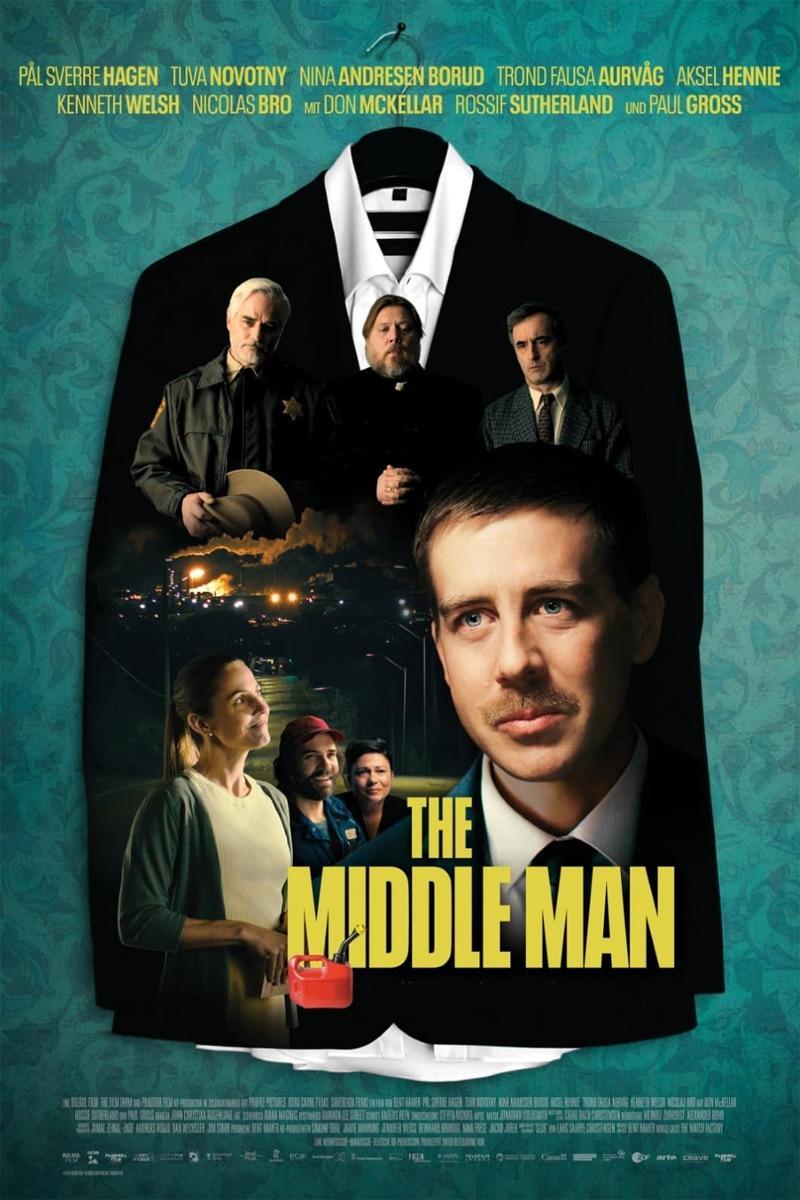Eye For Film >> Movies >> The Middle Man (2021) Film Review
The Middle Man
Reviewed by: Jennie Kermode

The town of Karmack, somewhere in the US Midwest, rivals Hot Fuzz’s Sandford as an accident blackspot. Here, however, it’s not so much a consequence of murder as of a desperately depressed economic state which has left some people suicidal, others careless, and has allowed vital infrastructure to corrode. Nobody now seems to have the will to do anything about this, but what they are willing to invest in is a middle man – somebody who will stand in for the sheriff (Paul Gross), doctor (Don McKellar) and pastor (Nicolas Bro) when it comes to the breaking of bad news.
Taking on this thankless job is the personable but naïve Frank (Pål Sverre Hagen), a mild mannered man who actually seems to believe, at the outset, that he can do some good. The bulk of the film unfolds as a series of vignettes in which he is confronted with one absurdly awful situation after another, observing the diversity of people’s reactions to death and suffering whilst taking in the cumulative damage which these experiences do to his psyche. Only the shy but determined Blenda (Tuva Novotny, whom viewers may recognise from 2018’s [id=34823]Annihilation[/film]) seems to have the least concern about his fate.

US critics have been comparing this to the work of the Coen brothers, but really it has a very Scandinavian sense of humour, unsurprising given that it draws heavily on Norwegian and Danish talent. There’s a dry wit here which fans of Nordic noir will appreciate, though in places it deprives the film of much-needed energy. All those vignettes do eventually build up and lead Frank to a revelation – one which points up the wider symbolic significance which one might discern in the situation – but the downbeat ending may not entirely satisfy English-speaking audiences used to a different type of resolution.
What is likely to get the attention of audiences everywhere is the film’s handsome framing. The work of cinematographer John Christian Rosenlund, it might look over the top in another context, but it suits the mood here perfectly. There’s extensive use of symmetry to highlight the absurdity of unfolding events, whilst the cool light perfectly captures the emotional surrender of the townspeople, most of whom have long since ceased to expect or strive towards anything other than a dismal fate. Handsome wooden interiors highlight the social and economic gulf between the town authorities and its ordinary residents, at the same time telling us something about the elegance which the whole place might once have enjoyed, in long forgotten days.
Is this the decay of America? “Crying is a privilege that belongs to the next of kin, not the middle man,” Frank is told, but he cries for everyone. Confronted with the elaborate nature of the film’s disasters, with the scale of its human suffering, one has to laugh.
Reviewed on: 09 Mar 2023


















